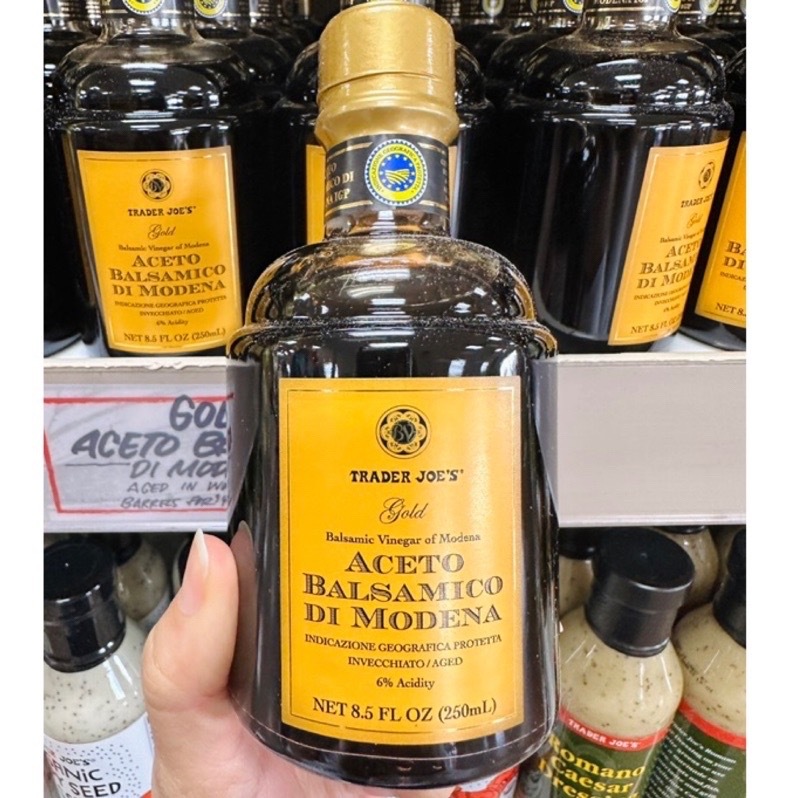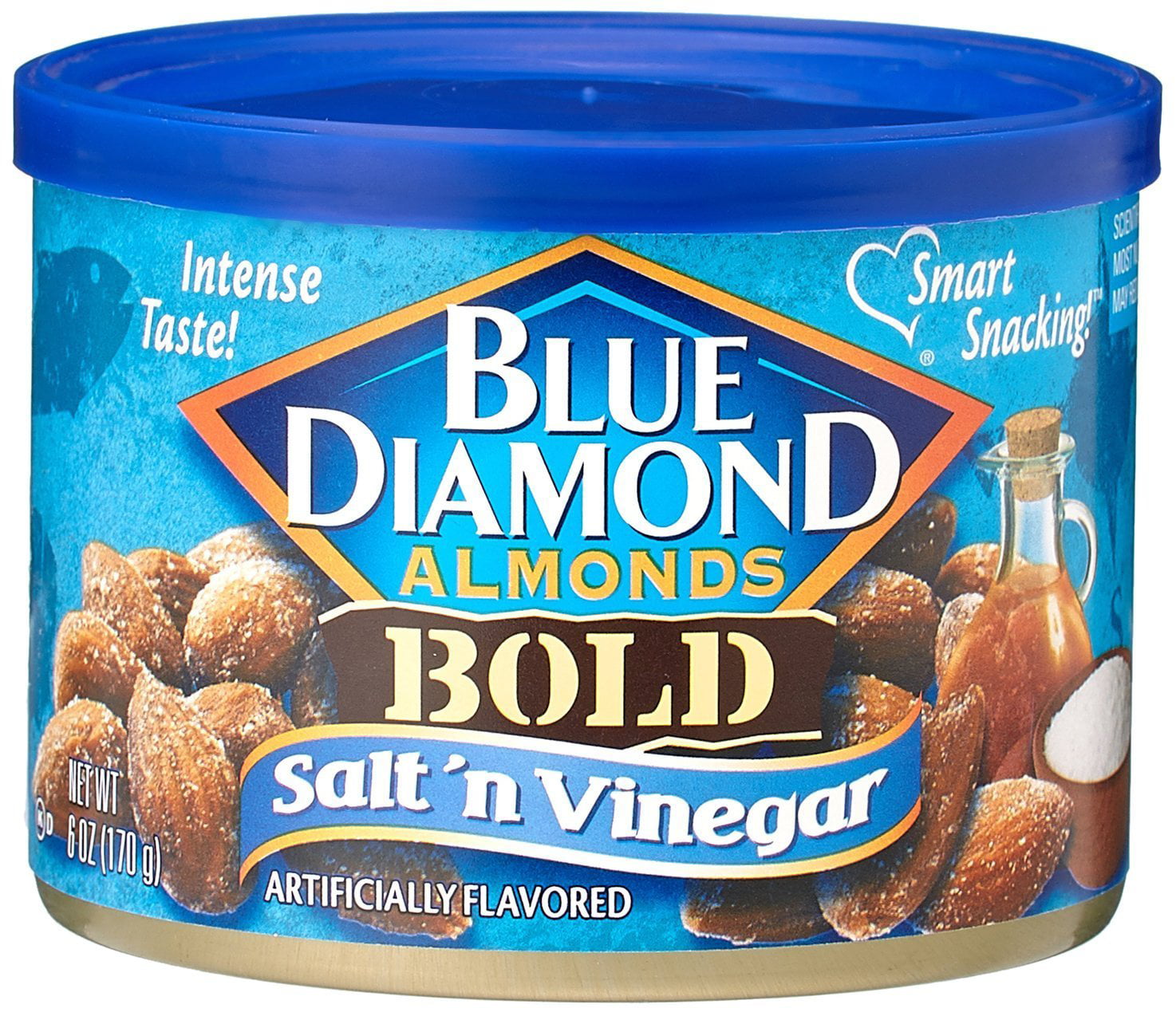Honestly very confused by how it can be a mainstream condiment/dressing. For me it’s just acidic. Doesn’t really taste of much but sorta tingles on my tongue/throat. Sorta like when you burp up a little stomach acid or a milder version of when you throw up stomach acid. Very confused about salt and vinegar chips and any sort of vinegar based salad dressing.
A splash of oil and vinegar makes the salad taste much better.
Having a swig from the bottle would be unpleasant.
I use the Aceto Balsamico de Moderna from Trader Joe’s to make salad dressing and it’s amazing.

Other than that, I’m not a huge vinegar fan.
If you just take the plain acidic vinegar, well, you are right. If you overdose it in your food, well, you are right, too.
But have you ever tried a nice Aceto Balsamico? Or other Crema Vinegar variants? I’ve got a blueberry vinegar I sometimes consume as an Apéritif. Yes, it is no soda, but it has a nice, light acidity.
For people used to drinks laced with 20% HFPC, vinegar might be an issue, though.
And regarding Salt&Vinegar chips: I was very sceptical when I tried my first S&V chips in the UK, and I think they are wonderful. To the point that we bring loads of English S&V crisps back from our trips to the UK.
Do you like other acidic flavours? Lemon juice? Citric acid?
yeah I do. All for lemon juice to up the acidity of things but really not a fan of vinegar.
Vinegars first and most important thing is its acidity. Its one of the building blocks for deeper taste in dishes.
Most condiments and seasonings taste bad on their own. You probably wont enjoy spoonfull of salt or pepper either so you dont need to enjoy vinegar on its own.
Some people like salt and vinegar chips, some enjoy sourcream and some like their chips with habanero.
As for salad dressings, vinegar is often used with oil to get emulsion for the dressing and historically its good for preserving food so many recepies still work around that taste. Not too dissimiliar why many food cultures use chili and paprika. Strong flavors were used to both preserve food and hide the possible moldy tastes.
Personally i like vinegar when it highlights and deepens the taste of food, but does not cover anything under it.
Salt & Vinegar chips are amazing
I didn’t like them the first time I tried them, but they are awesome!
Roger that!
I’m also a big fan of these

YES, these are excellent
German potato salad is vinegar based. Delicious.
South German.
Bavarian, yes. Good distinction.
The Swabians commit the same culinary crime. Thats why I said southern Germany. It is not just Bavaria.
TIL. Thanks.
On its own? Absolutely not. But the right amount to balance flavor? Absolutely.
Vinegar with a side of fried potatoes? Absolutely
I actually like vinegar by itself but it’s too potent to just drink it straight. Instead I’ll get a bunch of green onions and let them soak in the vinegar, then I suck the vinegar out of the green onions and enjoy the onion itself as a crunchy snack after.
chem vinegar (acetic acid) has its place for balancing marinade and sometimes dressing, sometimes laundry too.
the more common one i use are cane and apple cider.
It’s probably the best flavor we have
Live vinegar is the one I like. But also - I’ve developed more tolerance for sour foods over time, your palate may adjust.
Try a “shrub” - use a little vinegar and some mashed berries and a little sugar to flavor cold water, sort of like making a lemonade but with vinegar and see if you like that; and also try a balsamic reduction.
I can’t imagine anyone likes straight up plain white vinegar on its own, and sometimes those vinaigrette dressings are way too sour, but vinegar can be such a good adjuster and flavoring.
I love vinegar. It’s nice having working tastebuds.
Love it. Quite apart from the subline perfection of vinegar on fish and chips, I love a good vinaigrette salad dressing. I could drink that. And salt and vinegar crisps are top tier (although Walkers1 Pickled Onion are even sharper). I also like pickles of almost all sorts.
1 Walkers are, of course, deeply suspect. Salt and Vinegar should be in a blue packet, not a green packet!
I will only eat my pot stickers with balsamic vinegar and after I finish all the dumplings I have been known the drink the remaining oily vinegar that’s left over.
I fucking love vinegar.
Pickles, salt and vinegar chips, fish and chips with malt vinegar, Chinese hot and sour soup, rustic Italian bread with EVOO and balsamic vinegar, chicken adobo, sinigang, chicharron dipped in spicy sukang, and the list goes on if you want to live a more substantial life with vinegar
Pop some Tums dipped in Tabasco if your body attempts to digest itself inside out
Here’s a trick you can use to fool people into thinking you can cook:
Fry a chicken breast. Ideally, sauté, which just means: get a few tablespoons of canola oil in the pan almost smoking hot, dry the breast with paper towels - like, super dry - then fry the breasts a few minutes on each side. Put a little salt and pepper on the uncooked side as you’re frying it. Flip it only once, fry the other side. It’ll get that crispy brown coating.
When both sides are done, take it out, lower the temp of the pan to about medium, then dump a half-bottle of balsamic vinegar on there. I’m not joking - pour that shit in, a half bottle. Add some more salt & pepper - not too much! - tarragon, it you have it, and just boil it, stirring frequently. Scrape the bottom of the pan while you’re doing it; make sure you scrape up any bits of chicken. Keep boiling that stuff. It’ll boil down to less than half - when you can dip a spoon in curved-side down and lift it up and the sauce coats the spoon (doesn’t just run off), take it off the heat immediately.
It’ll be thick, and you’ll get maybe a quarter cup reduced from the cup you dumped in. It’ll thicken further as it cools. Let it cool, just a little, then drizzle that over the chicken.
Most of the acidity will be gone, and it’ll be a sweet syrup, and it’s fantastic.
But here’s the real magic: you can deglaze a pan and reduce almost anything that has sugars on it. Amaretto Chicken isn’t chicken cooked in amaretto: it’s chicken, with an amaretto reduction made exactly like I described for the balsamic above. Basically; I know the chefs are going to come out of the woodwork, but honestly. Try it with Grand Marnier liquor for an orange twist.
Wine needs more work, and white or red vinegar won’t do - there aren’t enough sugars for a reduction, but any liquor will do. Balsamic is my favorite.
One final trick: the balsamic reduction is best with tuna steaks. With those, you want them to hit the pan, sit for maybe 15 seconds, flip, 15s, and done. Pink in the middle with brown sides.
The most important things about all this are: high heat, and very dry meat. Get that stuff as dry as you can, with paper towels, or hand towels if you like washing clothes. It’s the water on the surface of what you’re cooking that causes oil to splatter, and everything works better when the meat, or tofu, is as dry as you can make it.
Final word: cast iron skillet.
FYI that’s shallow pan frying you are describing. sauté means to jump and the food should be almost constantly moving.
One of the things a sauté does is prevent a fond from forming. That keeps the flavor on the food and a deglaze is not necessary or helpful.
As my chief friend said when you are barefoot at the beach and the sand is hot you sauté to the shade.
https://cookingpro.net/what-is-the-definition-and-type-of-sauteing/
Lol that’s not a trick - you’re describing cooking.
Sshhh.
Thing is, nobody explains how easy these things are to do. Deglazing a pan. Making a reduction. Sauté-ing. They sound fancy, but they’re really, really simple; and sauté is so often misdescribed in recipes it’s become a pet peeve of mine. When I read instructions like, “sauté on medium heat” it drives me nuts. Sauté isn’t just a fancy word for frying. High heat, short cook time: it’s the definition!
Although my post went on a bit long, I was mostly saying that adding a little salt, pepper, and an herb to a lot of a high-suger liquid like balsamic vinegar, or Amaretto, or Cointreau, and boiling it down makes a wonderful sauce; and it’s easy to do.
I see recipes with 30 ingredients and 20 steps, and sometimes that’s needed, but usually not. My favorite bread recipe is “combine all ingredients in a mixer, mix for 5 minutes.” It doesn’t have to be more complex than that.
The best description of good food I’ve ever heard is: “quality ingredients, prepared simply.”
I wish someone had shown me when I was in my 20’s how simple some of these things are to do, hidden behind fancy names and complex recipes. A handful of easy techniques can produce a large variety of dishes just by changing ingredients, and I think that is a trick.













